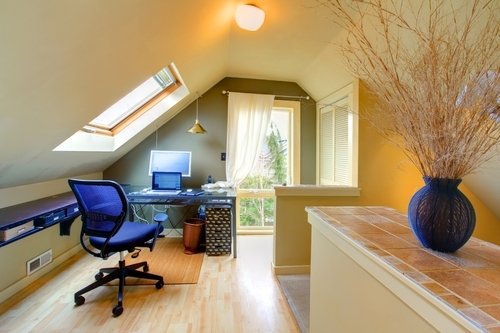
Home offices need to be practical, but keeping them from becoming austere is a challenge. There are ways that a well-equipped office can be softened in its design with the addition of simple, but useful features - roman shades instead of stark window shades and baskets used to organize and store supplies are just two of them.
By incorporating the best design elements from other parts of the house, an office can fit in well with the rest of the dwelling. They can also reflect the personality of those who use them by adding favorite colors, memorabilia and a style of furniture that suits their business needs as well as personal tastes.
Work with the Space
Built-in cabinetry can be customized to fit a residential workstation using all the available space by building from ceiling to floor. Another good idea is to attach a vertical bulletin board the size of a full-length mirror on a side wall. That keeps the post-it notes and paperwork readily available without cluttering the space above the desk.
If homeowners have some unique architecture, they should work around it, advised Houzz.com. For instance, an office under the eaves of a renovated attic can be outfitted with a collection of cubby holes for storage. Rather than use a standard desk, some spaces can be outfitted more easily with a desk surface held up by filing cabinets.
Wherever the office is located, it should be as comfortable in temperature. There's nothing more distracting than a chilly place to work. Installing electric in floor heating allows homeowners to have uniform radiant heat to warm the area without adding air ducts. It's energy efficient and works with a variety of flooring materials.
Finishing Touches
When it comes to choosing soft furnishings for the office - slipcovers for chairs, window treatments and pillows on a loveseat – IdeasForHomeDecorating.com recommended creating the right balance of solid and patterned fabrics that complement, but don't compete.
In other words, no single print should stand out as dominant over the rest when several are used. One large-scale pattern, for instance, will balance two smaller designs. Different types of fabric will bring textural value to the mix.
Decorating with smaller patterns can be deceiving, because they sometimes become indistinct from a distance. Stepping away to get the full view presents a clearer picture about how it will look to someone entering the room.




